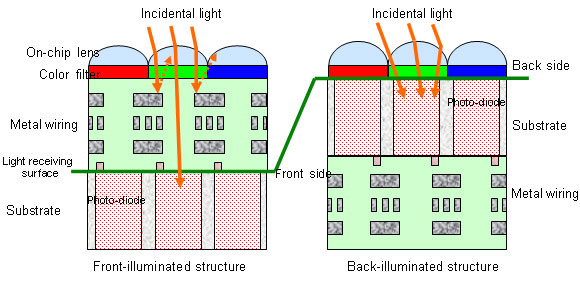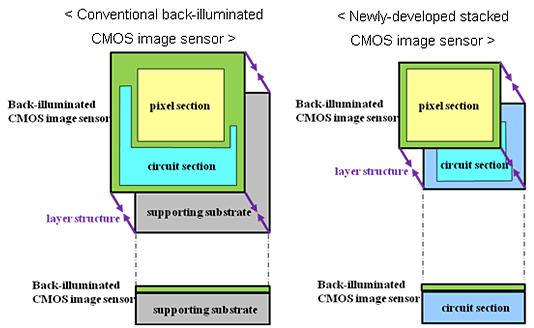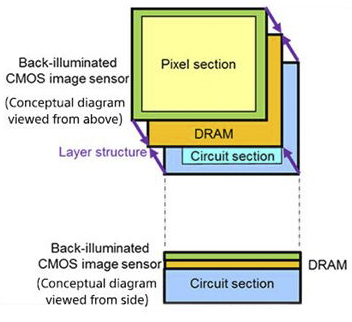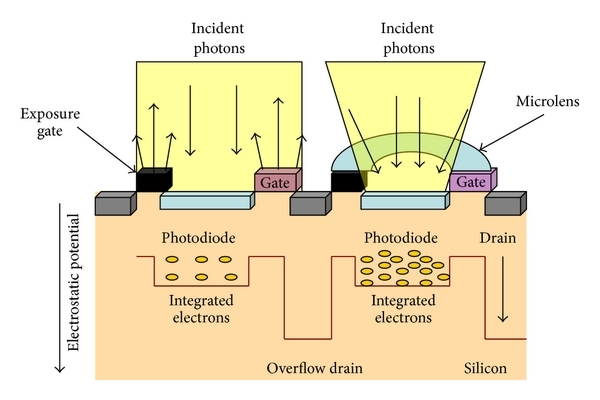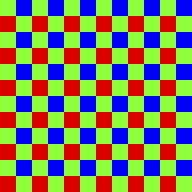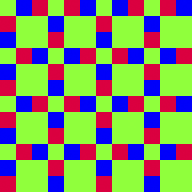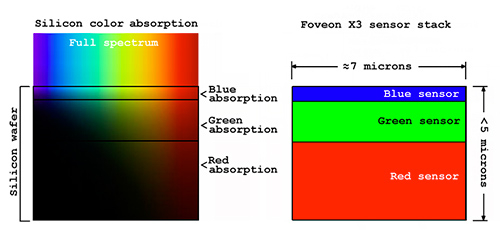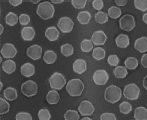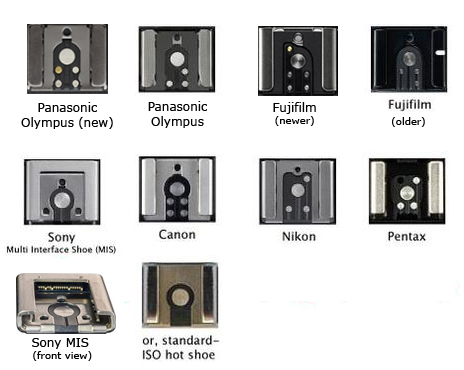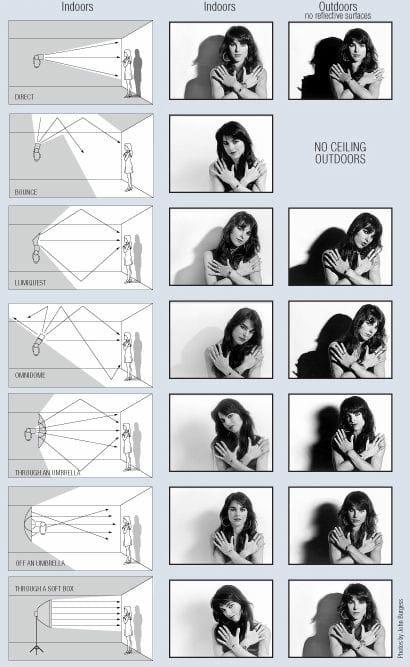Camera
|
Stills
Resolution
|
Video
Resolution
|
Sensor
|
Sensor
Size
|
Pixel
Size
|
Optics |
Aperture
|
Focal
Length |
Optical
Zoom |
Stabilization
|
Crop
Factor |
Focus
|
Shutter
|
Flash
|
ISO
Range
|
Exposure
Compensation |
White
Balance |
DxOMark
score |
Environment
Protection |
Camera
|
| Kodak Ektra 200 |
N/A |
N/A |
110 Cassette Film
|
FILM :
(17mm x 13mm) 221
area mm2 |
N/A
|
Kodar Lens |
f/11 |
22mm (44mm in 35mm equivalent) |
1x
|
None |
2x |
Fixed Focus Lens |
Mechanical Focal Plane, Fixed Speed |
Disposable FlipFlash Bulb Strip |
FILM :
100 to 400 |
No |
No |
None |
None, Flip cover covering Camera Lens
when closed
|
Kodak Ektra 200
|
| Kodak VR35 K4 |
N/A |
N/A |
35mm Film
|
FILM :
(36mm x 24mm) 864
area mm2 |
N/A |
Unknown |
f/5.6 |
35mm (35mm in 35mm equivalent) |
1x
|
None |
1x (none) |
Fixed Focus Lens |
Mechanical Focal Plane, Fixed Speed |
Zenon |
FILM : 100 to 400 |
No |
No |
None |
None,Mechanical Slide covering Camera Lens when
closed
|
Kodak VR35 K4
|
| Fujifilm DL-290 Zoom |
N/A |
N/A |
35mm Film
|
FILM :
(36mm x 24mm) 864 area mm2 |
N/A |
5 components, 5 elements |
f/5.0 - 10.5 |
38mm - 90mm (38mm - 90mm in 35mm equivalent) |
2.3x
|
None |
1x (none) |
Autofocus with autofocus lock (half press),
Active Infrared Autofocus |
Mechanical Focal Plane, Fixed Speed |
Zenon |
FILM : 50 to 1600 |
Yes |
No |
None |
None, Automatic Slide cover covering Camera Lens
when closed |
Fujifilm DL-290 Zoom
|
| Panasonic Lumix
DMC-LC20 |
1.9 Megapixel
(1600 x 1200 pixels)
Image formats : JPEG |
320x240 @ 10fps @ 1.34Mb/s
Video Formats : Quicktime(jpeg) .mov |
Matsushita CCD (FSI)
|
1/2.7" (5.27mm x 3.96mm) 20.8 area mm2 |
3.35 Microns |
Leica DC Vario-Elmarit Lens |
f/2.8 - 4.6 |
5.4mm - 16.2mm (35mm - 105mm in 35mm equivalent) |
3x
|
None |
6.5x |
Autofocus only, Contrast-detect autofocus |
Electronic Global Shutter, Auto 1/1000 to 1s |
Zenon |
100 to 400 |
Yes |
Yes |
None |
None, Automatic Slide cover covering Camera Lens
when closed
|
Panasonic Lumix
DMC-LC20 |
| Nokia 6230 |
0.3 Megapixel (640x480 pixels)
Image formats : JPEG |
128x96 @ 13fps @ 0.036Mb/s
Video Formats : MPEG-4(3GP5) .3gp |
ST Micro CMOS (FSI)
|
Unknown |
Unknown |
Plastic |
Unknown |
Unknown |
1x
|
None |
Unknown |
Fixed Focus Lens |
Electronic Global Shutter |
None |
Unknown |
No |
No |
None |
None |
Nokia 6230
|
| Olympus E-300 |
8 Megapixel
(3264 x 2448 pixels)
Image formats : JPEG, RAW (.orf) |
No Video Support |
Kodak KAF-8300CE CCD (FSI)
|
4/3"
(Four Thirds) (17.3mm x 13mm) 225 area mm2 |
5.4
Microns |
Zuiko14-45 Kit Lens |
f/3.5 - 5.6 |
14mm - 45mm (28mm - 90mm in 35mm equivalent) |
3.2x
|
None in Body
or kit Lens |
2x |
Autofocus / MF, Phase-detect autofocus |
Mechanical Focal Plane, Auto 1/4000 to 60s+Bulb |
Pop
up Zenon, Hotshoe connector for External Flash
units |
100 to 400 native (800 & 1600 as expanded) |
Yes |
Yes |
None |
None, Lens caps covering Camera Lens |
Olympus E-300
|
| Nokia N90 |
1.9 Megapixel (1600×1200 pixels)
Image formats : JPEG |
352x288 @ 15fps @ 0.54Mb/s
Video Formats : MPEG-4(MP42) .mp4 |
CMOS (FSI). (Partnumber:4858043 CMOS CAMERA
MODULE 2MP UNAGI) |
1/2.7" (5.37mm x 4.04mm) 21.7 area mm2
|
3.35 Microns |
Carl Zeiss |
f/2.9 |
5.5mm (35mm in 35mm equivalent) |
1x
|
None |
6.5x |
Autofocus only, 10 cm to infinity,
Contrast-detect autofocus |
Electronic Global Shutter, Auto 1/2500 to 1/8s |
LED |
100 to 800 |
Yes |
Yes |
None |
None |
Nokia N90
|
| Nokia N95 |
5 Megapixel
(2592 x 1944 pixels)
Image formats : JPEG |
640x480p @ 30fps @ 3.5Mb/s
Video Formats : MPEG-4(MP42) .mp4 |
Micron Technology MT9P001 CMOS (FSI)
|
1/2.5" (5.76mm x 4.29mm) 24.70 area mm2 |
2.2
Microns |
Carl Zeiss, Tessar Lens, 5 Elements |
f/2.8 |
5.6mm (35mm in 35mm
equivalent)
|
1x
|
None |
6.25x |
Autofocus only, Contrast-detect autofocus |
Mechanical, Auto 1/1000 to 1/3s |
LED |
100 to 800 |
Yes |
Yes |
None |
None, Mechanical Slide covering Camera Lens |
Nokia N95
|
| Sony Ericsson Satio |
12 Megapixel
(4000 x 3000 pixels)
Image formats : JPEG |
640x480p @ 30fps @ 3.9Mb/s
Video Formats : MPEG-4(MP42) .mp4 |
CMOS. Made by
Sony
|
1/3" (4.8mm x 3.6mm) 17.3 area mm2
|
1.2
Microns |
Unknown |
f/2.8 |
5.9mm (35mm in 35mm equivalent) |
1x
|
None |
5.9x |
Autofocus only, Contrast-detect autofocus |
Mechanical, Auto |
Zenon |
80 to 800 |
Yes |
Yes |
None |
None, Mechanical Slide covering Camera Lens
|
Sony Ericsson Satio
|
| Samsung Galaxy S2 |
8 Megapixel
(3264 x 2448 pixels)
Image formats : JPEG |
1080p @ 30fps @ 14.4Mb/s
Video Formats : MPEG-4(3GP4) .mp4 |
Sony IMX105 CMOS Back-illuminated (BSI)
|
1/3.2 (4.54mm x 3.42mm) 15.5 area mm2
|
1.4
Microns |
Plastic (4 plastic aspheric lenses) |
f/2.65 |
3.97mm (28mm in 35mm equivalent) |
1x
|
None |
7x |
Autofocus only, Contrast-detect autofocus |
Electronic Global Shutter, Auto 1/16000 to 1/15s |
LED |
40 to 800 |
Yes |
Yes |
57 (61 for
Photo and 50 for Video) |
None |
Samsung Galaxy S2
|
| Sony Xperia S |
12 Megapixel
(4000 x 3000 pixels)
Image formats : JPEG |
1080p @ 30fps @ 13.5Mb/s
Video Formats : MPEG-4(3GP4) .mp4 |
Sony CMOS Exmor-R Back-illuminated (BSI)
|
1/3" (4.8mm x 3.6mm) 17.3 area mm2
|
1.2
Microns |
Unknown |
f/2.4 |
4.48mm (35mm equivalent 35mm film format) |
1x
|
None |
7.8x |
Autofocus only, Contrast-detect autofocus |
Electronic Global Shutter, Auto |
LED |
50 to 800 |
Yes |
Yes |
None |
None |
Sony Xperia S |
| Nokia 808 Pureview |
41 Megapixel
(7728 x 5368 pixels)
Image formats : JPEG |
1080p @ 30fps @ 20Mb/s
Video Formats : MP4(H.264; AVC) .mp4 |
Toshiba HES9 (CIS) CMOS
|
1/1.2" (10.67mm x 8mm) 85.33 area mm2 |
1.4
Microns |
Carl Zeiss Optic, 5 elements, 1 group.
All lens surfaces are aspherical, One high-index,
low-dispersion glass mould lens, Neutral density Filter,
Scratch resistant gorilla glass cover |
f/2.4 |
8.02mm (26mm (16:9) / 28mm (4:3) equivalent 35mm
film format) |
1x
|
None |
3.24x |
Autofocus only, Contrast-detect autofocus |
Mechanical, Auto |
Zenon |
100 to 1600 |
Yes |
Yes |
61 (60 for Photo and 65 for Video) |
None, gorilla glass Lens |
Nokia 808 Pureview |
| Nokia N8 |
12 Megapixel
(4000 x 3000 pixels)
Image formats : JPEG |
720p @ 30fps @ 12Mb/s
Video Formats : MP4(H.264; AVC) .mp4 |
Toshiba HES7 CMOS |
1/1.83" (7.18mm x 5.32mm) 38.2 area mm2 |
1.75 Microns |
Carl Zeiss Optics, 5 Elements, Neutral density
Filter, Scratch resistant gorilla glass cover |
f/2.8 |
5.9mm (28mm equivalent 35mm film format) |
1x
|
None |
4.75x |
Autofocus only, Contrast-detect autofocus |
Mechanical, Auto 1/1900 to 1/15s |
Zenon |
100 to 800 |
Yes |
Yes |
None |
None, gorilla glass Lens |
Nokia N8 |
| Nikon D5200 |
24.1 Megapixel
(6000 x 4000 pixels)
Image formats : JPEG, 14-bit RAW (.nef) |
1080p @ 30fps @ 24Mb/s
1080p @
30fps @ 64Mb/s (With v1.02 Nikonhacker Firmware)
720p @ 60fps @ 24Mb/s
Video Formats : MPEG-4(QT 2007.09)
.mov |
Toshiba 5105 CMOS (FSI)
|
General APS-C (23.5mm x 15.6mm) 366.6 area mm2 |
3.92
Micron |
Various |
Various |
Various |
Various
|
None on Body, Optical Stabilization on certain
Lenses |
1.5x |
Autofocus / MF, Phase-detect autofocus using
viewfinder and Contrast-detect autofocus using Liveview |
Electronically controlled vertical-travel
focal-plane mechanical shutter
Electronic front-curtain shutter available in mirror up
release mode. 1/4000 to 30s+Bulb |
Pop
up Zenon, Hotshoe connector for External Flash units |
100 - 6400 native (25600 as expanded) |
Yes |
Yes |
84 for Photo |
None, Lens caps covering Camera Lens |
Nikon D5200 |
Lens
|
Nikon AF-S DX NIKKOR 35mm f/1.8G (Prime) |
N/A |
N/A |
General APS-C Lens
|
N/A |
8 Elements in 6 Groups, with one hybrid
aspherical lens (AS) |
f/1.8, 7 blade rounded diaphragm |
35mm (52.5mm equivalent 35mm film format) |
1x
|
None |
1x (DX Native Lens) |
M/A and M, Internal Focus, AF-S (Silent Wave
Motor). |
N/A |
N/A |
N/A |
N/A |
N/A |
N/A |
None, Lens caps covering Lens |
Lens |
| Lens |
Nikon 16-85mm f/3.5-5.6G ED VR AF-S DX NIKKOR
(Standard Zoom) |
N/A |
N/A |
General APS-C Lens |
N/A |
17 Elements in 11 Groups, 2 ED Glass elements, 3
aspherical elements |
f/3.5-5.6, 7 blade rounded diaphragm |
16mm - 85mm (24mm - 128mm in 35mm equivalent) |
5.3x |
Optical VRII (Vibration Reduction), normal &
active |
1x (DX Native Lens) |
M/A and M, Internal Focus, AF-S (Silent Wave
Motor). |
N/A |
N/A |
N/A |
N/A |
N/A |
N/A |
None, Lens caps covering Lens |
Lens |
| Lens |
Nikon AF-S VR Zoom-Nikkor 70-300mm f/4.5-5.6G
IF-ED (Zoom) |
N/A |
N/A |
Full Frame Lens
|
N/A |
17 Elements in 12 Groups, 2 ED Glass elements,
super Integrated coating |
f/4.5-5.6, 9 blade rounded diaphragm |
105mm - 450mm (70mm - 300mm in 35mm equivalent) |
4.2x |
Optical VRII (Vibration Reduction), normal &
active |
1.5x (FX Native Lens) |
M/A and M, Internal Focus, AF-S (Silent Wave
Motor). |
N/A |
N/A |
N/A |
N/A |
N/A |
N/A |
None, Lens caps covering Lens |
Lens |
| Lens |
Tamron SP 90mm F/2.8 Di Macro 1:1 VC USD (Model
F008) (Macro) |
N/A |
N/A |
Full Frame Lens |
N/A |
14 Elements in 11 Groups, 2 special XLD
(Extra Low Dispersion) elements and one LD (Low
Dispersion) element |
f/2.8, 9 blade rounded diaphragm |
135mm (90mm in 35mm equivalent) |
1x |
Optical, VC (Vibration Compensation) |
1.5x (FX Native Lens) |
AF and MF, Internal Focus, USD (Ultrasonic
Silent Drive motor), Three-stage focus limiter switch
|
N/A |
N/A |
N/A |
N/A |
N/A |
N/A |
None, Lens caps covering Lens |
Lens |
| Lens |
Sigma 10-20mm f/3.5 EX DC HSM (Ultra Wide Zoom)
|
N/A |
N/A |
General APS-C Lens |
N/A |
13 Elements in 10 Groups, 1 SLD Glass element, 2
ELD Glass Elements and 2 Hybrid aspherical elements
|
f/3.5, 7 blade rounded diaphragm |
10mm - 20mm (15mm - 30mm in 35mm equivalent)
|
2x |
None |
1x (DX Native Lens) |
AF and M, Internal Focus, HSM (Hyper-Sonic
motor) |
N/A |
N/A |
N/A |
N/A |
N/A |
N/A |
None, Lens caps covering Lens |
Lens |
| HP EliteBook 2760p
Tablet PC webcam |
0.31 Megapixel (640x480)
Image formats : JPEG |
640x480p @ 60fps @ 5.8Mb/s 4:2:0 Chroma. 8 bits
Video Formats : MP4(H.264; AVC) .mp4 |
VGA CMOS
|
1/6" (2.4mm x 1.8mm) 4.32 area mm2 |
Unknown |
Plastic |
Unknown |
3.4mm (32mm equivalent 35mm film format) |
1x
|
None |
Unknown |
Fixed |
Electronic Global Shutter, Auto |
None |
Unknown |
Unknown |
Unknown |
None |
Nome
|
HP EliteBook 2760p Tablet PC webcam
|
| Azpen A733 |
2.21 Megapixel (1920 x 1152 pixels)
Image formats : JPEG |
1080p @ 18fps @ 10.5Mb/s 4:2:0 Chroma. 8
bits
Video Formats : MP4(H.264; AVC) .3gp |
CMOS (FSI)
|
1/5" (3mm
x 2.5mm) 7.5 area
mm2 |
Unknown |
Plastic, Two Fixed Focus Elements |
f/2.8 |
4mm (28mm equivalent 35mm film format) |
1x
|
None |
Unknown |
Fixed Focus Lens |
Electronic Global Shutter, Auto |
LED |
100 - 400 |
Yes |
Yes |
None |
None
|
Azpen A733 |
GoPro HD Hero2 (CHDMH-002)
|
11 Megapixel (3840x2880)
Image formats : JPEG |
1080p @30fps
@ 35Mb/s
960p @30fps @
35Mb/s
720p
@60fps @ 20Mb/s
WVGA @120fps @ 20Mb/s
Video Formats : MP4(H.264; AVC) .mp4 4:2:0 Chroma. 8 bits
|
CMOS Bayer RGB color filter array |
1/2.3" (6.17mm x 4.55) 28.1 area mm2 |
Unspecified |
6-element Glass aspheric design |
f/2.8 |
2.77mm (15mm equivalent 35mm film format) 170deg
FOV |
1x
|
None |
5.4x |
Fixed Focus - 30cm to infinity |
Electronic Global Shutter |
None |
Auto |
Yes, spot meter on/off |
Yes, Auto, Manual |
None |
None without housing, Waterproof up to 60 meters
with housing |
GoPro HD Hero2
(CHDMH-002) |
| Samsung Galaxy Tab 4
7.0 3G (SM-T231) |
3.15 Megapixel (2048 x 1536 pixels)
Image formats : JPEG |
720p @ 25fps @ 9.84Mb/s
Video Formats : MP4(H.264; AVC) .mp4 |
CMOS (FSI)
|
1/5" (3mm
x 2.5mm) 7.5 area
mm2 |
Unknown |
Plastic, Two Fixed Focus Elements |
f/2.6 |
3mm |
1x
|
None |
Unknown |
Fixed focus Lens |
Electronic Global Shutter, Auto |
None |
100 - 400 |
Yes |
Yes |
None |
None |
Samsung Galaxy Tab 4
7.0 3G (SM-T231) |
| Nokia Lumia 1020
(RM-875) |
38Megapixel
(7152 x 5368)
Image formats : JPEG, RAW (.png)
|
1080p @30fps @ 20Mb/s
720p @30fps @ 20Mb/s 4:2:0 Chroma. 8 bits
Video Formats : MP4(H.264) . mp4 |
CMOS BSI
|
1/1.5" (2/3") (8.8mm x 6.6mm) 58.1 area mm2 |
1.12 Microns |
Carl Zeiss Optic, Six elements in one group (5
plastic moulded, 1 high precision glass element), All lens
surfaces are aspherical, partly extreme aspheric, one high
refractive index, low-dispersion glass mould lens. Scratch
resistant glass |
f/2.2 |
6.4mm (16:9) / 6.9mm (4:3) (25mm (16:9) / 27mm
(4:3) equivalent 35mm film format) |
1x
|
Optical Image Stabilization |
3.93x |
Auto / Manual focus, Contrast-detect autofocus |
Mechanical, Auto, Manual, 1/16000 to 4s |
Zenon and LED |
100 - 4000, Auto, Manual |
Yes |
Yes |
74 (79 for Photo and 64 for Video) |
None, Scratch resistant
glass |
Nokia Lumia 1020 (RM-875)
|
| Samsung Galaxy K Zoom
LTE (SM-C115) |
20.1 Megapixel (5184 x 3888)
Image formats : JPEG |
1080p @60fps @ 28Mb/s
720p @60fps @ 28Mb/s 4:2:0 Chroma. 8 bits
Video Formats : MP4(H.264) .mp4 |
Sony IMX220 CMOS Exmor RS BSI
|
1/2.3"
(6.17mm x 4.55mm) 28.1 area mm2 |
1.2
Microns |
Samsung Lens, 10x Optical Zoom |
f/3.1 - 6.3 |
4.4mm - 44mm (24mm - 240mm equivalent 35mm film
format) |
10x
|
Optical Image Stabilization |
5.46x |
Auto / Manual focus, Contrast-detect autofocus |
Mechanical, Auto, Manual, 1/2000 to 16s |
Zenon |
100 - 3200, Auto, Manual |
Yes |
Yes |
None |
None, Automatic Slide cover covering Camera Lens
when closed |
Samsung Galaxy K Zoom
LTE (SM-C115) |
| Samsung Galaxy Tab S
8.4 LTE (SM-T705) |
8 Megapixel (3268x2448)
Image formats : JPEG |
1080p @30fps @ 17Mb/s4:2:0 Chroma. 8 bits
Video Formats : MP4(H.264) .mp4 |
Sony IMX134 CMOS Exmor
"RS Stacked" "RGBW Coding" |
1/4"
(3.6mm x 2.7mm) 9.72 area mm2 |
1.2
Microns |
Plastic ( 4 Groups, 4 Elements) |
f/2.4 |
3.4mm (32mm equivalent 35mm film format) |
1x
|
Electronic Image Stabilization |
9.4x |
Auto |
Electronic Global Shutter, Auto |
LED |
100 - 800, Auto, Manual |
Yes |
Yes |
None |
None |
Samsung Galaxy Tab S
8.4 LTE (SM-T705) |
| Microsoft LifeCam
HD-3000 Webcam (T3H-00011) |
1 Megapixel
(1280x800)
Image formats : JPEG |
720p @30fps @ 1.7Mb/s 4:2:0 Chroma. 8 bits
Video Formats : MP4(H.264) . mp4 |
VGA CMOS
|
1/6" (2.4mm x 1.8mm) 4.32 area mm2 |
Unknown |
Plastic |
Unknown |
(31mm equivalent 35mm film format) 68.5deg FOV |
1x |
None |
Unknown |
Fixed from 0.3m to 1.5m |
Electronic Global Shutter, Auto |
None |
Unknown |
Unknown |
Unknown |
None |
None |
Microsoft LifeCam
HD-3000 Webcam (T3H-00011) |
| 2 In 1 PC &
Android Smartphone Wire Endoscope Camera
|
0.31 Megapixel (640x480)
Image formats : JPEG |
480p @30fps @ 1.7Mb/s 4:2:0 Chroma. 8 bits
Video Formats : MP4(H.264) . mp4 |
VGA CMOS
|
1/6"
(2.4mm x 1.8mm) 4.32 area mm2 |
Unknown |
Plastic |
Unknown |
(37mm equivalent 35mm film format). 60deg FOV |
1x |
None |
Unknown |
Fixed from 3cm-10cm-infinite |
Electronic Global Shutter, Auto |
6 LED Light with Adjustable Lightness switch |
Unknown |
Unknown |
Unknown |
None |
IP67 |
2 In 1 PC &
Android Smartphone Wire Endoscope Camera
|
Huawei P20 Pro
(CLT-L29)
|
Main
camera :
40Mp (7296x5472)
Secondary camera: 20Mp (5120x3840)
Tele
camera
: 8Mp
(3648x2736)
Image formats : JPEG, RAW (.png)
|
4K @
30fps
@ 35Mb/s
1080p @ 30/60/120 fps @ 33Mb/s
720p @ 30/60/240 fps @ 33b/s
4:2:0 Chroma. 8 bits
Video Formats : MP4; H.264 (AVC), MP4; H.265 (HEVC) .mp4
|
CMOS BSI
Main camera :
RGB sensor with Quad Bayer structure
Secondary camera : Monochrome sensor
Tele-camera :
RGB sensor |
Main camera
: 1/1.78" (7.76mm x
5.82mm) 45.16 area
mm2
Secondary camera :1/2.78″ (5.37mm x 4.04mm) 21.7 area mm2
Tele
camera
: 1/4.4″ (3.2mm x 2.4mm) 7.68 area mm2
|
Main camera
: 1 Micron
Secondary camera
: Unsure
Tele-camera : Unsure |
LEICA VARIO-SUMMILUX-H 1:1.6-2.4/27-80ASPH
|
Main camera : f/1.8
Secondary
camera : f/1.6
Tele camera : f/2.4 |
Main
camera
: 3.95mm (27mm equivalent 35mm film format) 67.5deg FOV
Secondary camera : 3.95mm
(27mm equivalent 35mm film format) 67.5deg FOV
Tele- camera
: 2.4mm (81mm equivalent 35mm film format). 25deg FOV
|
Main
camera
: 1x
Secondary camera : 1x
Tele- camera
: 3x |
Main camera
: AI Image
Stabilisation
Secondary camera : AI Image Stabilisation
Tele camera :
Optical image stabilization |
Main
camera
: 6.8x
Secondary camera : 33.7x
Tele camera : 6.8x
|
Auto / Manual focus, PDAF+CAF+Laser+Depth
Autofocus |
Electronic Global Shutter, Auto 1/4000 to
30s |
Dual-LED, Dual-tone flash |
50 - 102400, Auto, Manual |
Yes |
Yes |
109 (114 for Photo and 98 for Video) |
IP67, Quartz Lens |
Huawei P20 Pro
(CLT-L29) |
Apple iPhone 7 (A1778
/ MN8X2AA/A)
|
12 Megapixel (4032x3024)
Image formats : JPEG, HEIF, RAW
(.png) |
4K @30fps
@ 44Mb/s
1080p @120fps @ 44Mb/s
720p @240fps @ 44Mb/s
Video Formats : MP4(H.264), HEVC .mov 4:2:0 Chroma. 8
bits) |
Sony CMOS Exmor RS Stacked BSI
Bayer RGB color filter array |
1/3"
(4.8mm x 3.6mm) 17.3 area mm2 |
1.22 Microns |
Six Element Lens, Scratch resistant Quartz Lens
cover. |
f/1.8 |
3.99mm (28mm equivalent 35mm film format)
65.5deg FOV |
1x |
Optical Image Stabilization
|
7.2x |
Auto / Manual focus, Phase Detect (PDAF) and
Contrast Detect (CAF) autofocus |
Electronic Global Shutter, Auto 1/2000 to
1/4s |
Quad-LED, Dual-tone flash |
22 - 1759, Auto, Manual |
Yes |
Yes |
85 (85 for Photo and 85 for Video) |
IP67, Quartz Lens |
Apple iPhone 7 (A1778
/ MN8X2AA/A) |
ASUS N53SV Laptop
(N53SV-A1) webcam
|
2 Megapixel (1920x1080)
Image formats : JPEG |
1080p @ 60 fps @ 4.2Mb/s 4:2:0 Chroma. 8
bits)
Video Formats : MP4(H.264) .mp4 |
VGA CMOS
|
1/6" (2.4mm x 1.8mm) 4.32 area mm2 |
Unknown |
Plastic
|
Unknown |
3.4mm (32mm equivalent 35mm film format) |
1x |
None |
Unknown |
Fixed |
Electronic Global Shutter, Auto |
None |
Unknown
|
None |
None |
None |
None |
ASUS N53SV Laptop
(N53SV-A1) webcam |
Lenovo Yoga Tab 3 Pro
(YT3-X90L)
|
13 Megapixel (4190x3104)
Image formats : JPEG |
1080p @ 30 fps @ 15Mb/s
720p @ 30 fps @ 15Mb/s
480p @ 30 fps @ 15Mb/s 4:2:0
Chroma. 8 bits)
Video Formats : MP4(H.264) .mp4 |
O-FILM L1335A00 CMOS
Bayer RGB color filter array
|
Unknown |
Unknown |
Unknown |
f/2.3 |
3.68mm (28mm equivalent 35mm film format)
65.5deg FOV |
1x |
None
|
6.8x |
Auto, Contrast Detect (CAF) autofocus |
Electronic Global Shutter, Auto |
No |
47 - 800 |
Yes |
Yes |
None |
IP21 |
Lenovo Yoga Tab 3 Pro
(YT3-X90L) |
Sony Xperia XZ
Premium (G8141)
|
19 Megapixel (5056x3792)
Image formats : JPEG |
4K @ 30fps @
56Mb/s
1080p @ 60 fps @ 30Mb/s
720p @ 960 fps @ 12Mb/s 4:2:0 Chroma. 8
bits
Video Formats : MP4(H.264; AVC) .mp4 |
Sony IMX400 CMOS Exmor (3-Layer Stacked)
Bayer RGB color filter array
|
1/2.3" (6.17mm x 4.55mm) 28.1 area mm2 |
1.22 Microns |
Sony G Lens |
f/2.0 |
4.4mm (25mm equivalent 35mm film format) 74deg
FOV |
1x |
Electronic Image Stabilization |
5.6x |
Auto / Manual focus, Contrast-detect autofocus,
Laser Focus |
Electronic Global Shutter, Auto 1/4000 to 1s |
Single LED |
50 - 3200 |
Yes |
Yes |
83 (82 for Photo and 84 for Video) |
IP68 |
Sony Xperia XZ
Premium (G8141) |
GoPro Hero 3 Black Edition
(CHDHX-301)
|
12 Megapixel (4000x3000)
Image formats : JPEG |
4K
@ 15fps @ 45Mb/s
4K(4:3) @ 12fps @ 45Mb/s
2.7K @
30fps @ 45Mb/s
2.7K(4:3) @ 24fps @ 45Mb/s
1440p @ 48fps
@ 30Mb/s
1080p @ 60fps @
30Mb/s
960p @ 100fp RAW (.dng)s
@ 30Mb/s
720p @ 100fps
@ 30Mb/s
WVGA @ 240fps @ 30Mb/s
Video Formats : MP4(H.264; AVC) .mp4 4:2:0 Chroma. 8 bits
|
Sony IMX117 CMOS BSI
Bayer RGB color filter array
|
1/2.3" (6.17mm x 4.55mm) 28.1 area mm2 |
1.55 Microns |
6-element Glass aspheric design |
f/2.8 |
2.77mm (15mm equivalent 35mm film format) 170deg
FOV |
1x |
None |
5.4x |
Fixed Focus - 30cm to infinity |
Electronic Global Shutter |
None |
Auto |
Yes, spot meter on/off |
Yes, Auto, Manual |
70 (68 for Photo and 75 for Video) |
None without housing, Waterproof up to 60 meters
with housing |
GoPro Hero 3 Black
Edition (CHDHX-301) |
| GoPro Hero 7 Black Edition
(CHDHX-701) |
12 Megapixel (4000x3000)
Image formats : JPEG, RAW (.gpr) |
4K @
60fps @ 78Mb/s (HEVC)
4K (4:3) @ 30 fps @ 78Mb/s
2.7K @ 120 fps @ 78Mb/s
2.7K (4:3) @ 60 fps @ 78Mb/s
1440p @ 120 fps @ 78Mb/s
1080p @ 240 fps @ 78Mb/s
960p @ 240 fps @
78Mb/s
720p @ 240 fps @
78Mb/s 4:2:0 Chroma. 8 bits
Video Formats : MP4; H.264 (AVC), MP4; H.265 (HEVC) .mp4
|
Sony IMX277 CMOS BI DOL-HDR = Back-illuminated
CMOS Image Sensor Digital Over-Lap High Dynamic Range
technology
Bayer RGB color filter array
|
1/2.3" (6.17mm x 4.55mm) 28.1 area mm2 |
1.55 Microns |
6-element Glass aspheric design |
f/2.8 |
2.77mm (15mm equivalent 35mm film format) 170deg
FOV |
1x |
Electronic Image Stabilization (Hypersmooth
Stabilisation) |
5.4x |
Fixed Focus - 30cm to infinity |
Electronic Global Shutter, Auto, 1/125, 1/250,
1/500, 1/1000, 1/2000 |
None |
100 - 6400
|
Yes, spot meter on/off |
Yes, Auto, Manual |
None |
IP68, up to 10 meters without housing,
Waterproof up to 60 meters with housing
|
GoPro Hero 7 Black
Edition (CHDHX-701) |
| Samsung Gear 360 2017
(SR-R210) |
15 Megapixel (5472 x 2376)
Image formats : JPEG |
4,096 x 2,048 @ 24fps @ 30Mb/s
2,800 x 1,440 @ 30fps @ 30Mb/s
2,560 x 1,280 @ 60fps @ 30Mb/s
1920 x 1080p @ 60fps @ 30Mb/s 4:2:0 Chroma. 8
bits
Video Formats : MP4; H.265 (HEVC) .mp4 |
Dual Cmos Image Sensors
|
1/2.3"
(6.17mm x 4.55mm) 28.1 area mm2 |
Unspecified |
Dual 195 Degree Fisheye Lenses by Samsung
|
f/2.2 |
1.2mm (6mm equivalent 35mm film format) 360deg
FOV |
1x |
None
|
5x
|
Fixed Focus - 30cm to infinity |
Electronic Global Shutter, Auto |
None
|
100 - 1600
|
Auto
|
Auto
|
None |
IP53 |
Samsung Gear 360 2017
(SR-R210) |
| DJI Spark Drone |
12 Megapixel (3968x2976)
Image formats : JPEG |
1080p @
30fps @ 24Mb/s
Video Formats : MP4 (H.264; AVC) .mp4 4:2:0 Chroma. 8 bits
|
CMOS |
1/2.3"
(6.17mm x 4.55mm) 28.1 area mm2 |
Unspecified |
Five Element Lens arranged into a single Group
|
f/2.6 |
25mm (35mm equivalent 35mm film format) 81.9 deg
FOV |
1x |
2-axis mechanical gimbal (Pitch, Roll) and EIS
(UltraSmooth Technology) for Yaw and stabilization
|
5x |
Fixed Focus - 2 meter to infinity |
Electronic Global Shutter, Auto 1/80000 to
2s |
None |
100 - 1600 Photo
100 - 3200 Video
|
Auto |
Auto |
None |
None, 3D printed Gimbal cover for Transporting
Drone |
DJI Spark Drone |
| Hubsan Zino Drone |
8 Megapixel (Video Grab 16:9) |
4K
@ 30fps @ 60Mb/s
4K
@ 30fps @ 90Mb/s (With Modified ROM )
2.7K
@ 60fps @ 60Mb/s
1080p @ 60fps @
60Mb/s
Video Formats : MP4 (H.264; AVC) .mp4 4:2:0 Chroma. 8 bits |
Sony IMX258 BSI CMOS |
1/3"
(4.8mm x 3.6mm) 17.3 area mm2 |
1.12 Microns |
Unknown |
f/2.2 |
25mm (35mm equivalent 35mm film format) 89 deg
FOV |
1x |
3-axis mechanical gimbal (Pitch, Roll, Yaw) |
5.46x |
Fixed Focus - 2 meter to infinity |
Electronic Global Shutter, Auto |
None |
100 - 1600
|
Auto |
Auto |
None |
None, Plastic Gimbal cover for Transporting
Drone |
Hubsan Zino Drone |
| Nikon
D7500 |
20.9 Megapixel
(5568 x 3712 pixels)
Image formats : JPEG, 14-bit RAW (.nef) |
3840 x 2160 @ 30fps @ 125 Mbps
3840 x 2160 @ 25fps @ 125 Mbps
3840 x 2160 @ 24fps @ 125 Mbps
1920 x 1080 @ 60fps @ 48 Mbps
1920 x 1080 @ 50fps @ 48 Mbps
1920 x 1080 @ 30fps @ 24 Mbps
1920 x 1080 @ 25fps @ 24 Mbps
1920 x 1080 @ 24fps @ 24 Mbps
1280 x 720 @ 60fps @ 24 Mbps
1280 x 720 @ 50fps @ 24 Mbps
4:2:0 Chroma. 8 bits
Video Formats : MOV (Video: H.264, Audio: Linear PCM) and
MP4 (Video: H.264, Audio: AAC) |
Sony IMX-321 CMOS, RGB Filter with no Anti-Alias
Filter
|
General APS-C (23.5mm
x 15.6mm) 366.6 area mm2 |
4.2
Micron |
Various |
Various |
Various |
Various
|
None for
photo on Body, EIS for 1080p video only (not for 4K),
Optical Stabilization on certain Lenses |
1.5x |
Autofocus /
MF, Phase-detect autofocus using viewfinder and
Contrast-detect autofocus using Liveview |
Electronically controlled vertical-travel
focal-plane mechanical shutter
Electronic front-curtain shutter available in mirror up
release mode.
1/8000 to 30s+Bulb |
Pop up Zenon,
Hotshoe connector for External Flash units
|
100-51,200
Expandable to
1,640,000
|
Auto |
Auto |
86 for Photo |
Water and Dust Protection on the Body,
Lens caps covering Camera Lens |
Nikon D7500 |
| Lens |
Tokina AT-X 150-500mm f5.6 SD Zoom Lens |
N/A |
N/A |
Full Frame Lens |
N/A |
15 elements in 13 groups.
Single-coated.
Some SD (same as ED or UD) glass |
f/5.6, 7 blade diaphragm |
225mm - 750mm (150mm - 500mm in 35mm equivalent)
|
3.3x
|
None
|
1.5x (FX Native Lens) |
Manual Focus only
|
N/A |
N/A |
N/A |
N/A |
N/A |
N/A |
None, Lens caps covering Lens |
Lens |
| Lens |
Nikon TC-17E II 1.7x Teleconverter |
N/A |
N/A |
Full Frame / General APS-C |
N/A |
7 elements in 4 groups.
Multi coated |
N/A
|
N/A
|
1x
|
Retains AF and VR with compatable lenses
(Electrical Contact Passthrough) |
1x
|
Retains AF and VR with compatable lenses
(Electrical Contact Passthrough) |
N/A |
N/A |
N/A |
N/A |
N/A |
N/A |
None, Lens caps covering Lens |
Lens |
| Lens |
Nikon Zoom-Nikkor 35-105mm f/3.5~4.5 MACRO AI-S
|
N/A |
N/A |
Full Frame Lens |
N/A |
16 elements in 12 groups |
f/3.5-4.5, 7 blade diaphragm |
52mm - 157mm (35mm - 105mm in 35mm equivalent)
|
3x
|
None |
1.5x (FX Native Lens) |
Manual Focus only |
N/A |
N/A |
N/A |
N/A |
N/A |
N/A |
None, Lens caps covering Lens |
Lens |
| Lens |
Nikon AF-S DX NIKKOR 50mm f/1.8G (Prime) |
N/A |
N/A |
Full Frame Lens |
N/A |
7 Elements in 6 Groups, with one aspherical lens
(AS), Super Integrated Coating (SIC) |
f/1.8, 7 blade rounded diaphragm |
75mm (50mm in 35mm equivalent) |
1x
|
None |
1.5x (FX Native Lens) |
M/A and M, Internal Focus, AF-S (Silent Wave
Motor) |
N/A |
N/A |
N/A |
N/A |
N/A |
N/A |
None, Lens caps covering Lens |
Lens |
| Lens |
Tamron 18-270mm F3.5-6.3 Di-II VC PZD B008
(Superzoom) |
N/A |
N/A |
General APS-C Lens |
N/A |
16 Elements in 13 Groups, 2 LD Glass elements, 3
aspherical elements |
f/3.5-6.3, 7 blade rounded diaphragm |
18mm - 270mm (27mm - 405mm in 35mm equivalent) |
15x
|
Optical, VC (Vibration Compensation) |
1x (DX Native Lens) |
AF and MF, Internal Focus, Piezo Drive
ultrasonic motor (PZD) |
N/A |
N/A |
N/A |
N/A |
N/A |
N/A |
None, Lens caps covering Lens |
Lens |
| Huawei
Y5 2019 (AMN-LX9)
|
13 Megapixel (4160 x 3120)
Image formats : JPEG |
1920 x
1080p @ 30fps @ 18Mb/s 4:2:0 Chroma. 8 bits
Video Formats : MP4; H.264 (AVC) .mp4 |
CMOS
|
Unspecified |
Unspecified |
Sunny 02352QRC camera module
|
f/1.8 |
3.62mm (26mm equivalent 35mm film format)
|
1x
|
None
|
7.1x
|
Auto, Contrast Detect (CAF) autofocus |
Electronic Global Shutter, Auto |
Single LED |
100 - 3200 |
Yes
|
Yes
|
None
|
None
|
Huawei
Y5 2019 (AMN-LX9)
|
| Apple
iPhone 11 Pro (A2215/ MWC62AA/A) |
12 Megapixel (4032x3024)
Image formats : JPEG, HEIF, RAW
(.dng) |
4K
@60fps @ 51Mb/s
(HEVC)
4K @60fps
@ 128Mb/s (With ProCamera App)
1080p
@240fps @ 51Mb/s (HEVC)
Video
Formats : MP4
(H.265), HEVC .mov 4:2:0 Chroma. 8 bits) |
Sony CMOS |
Ultra Wide : 1/3.4" (4.23mm x 3.17mm) 13.4 area mm2
Wide angle : 1/2.55" (5.76mm x 4.29mm) 24.70 area mm2
Telephoto : 1/3.4" (4.23mm x
3.17mm) 13.4
area mm2
|
Ultra Wide : 1 Micron
Wide angle : 1.4
Micron
Telephoto : 1
Micron
|
- Ultra-Wide
Lens Elements: 5
- Wide
Lens
- Elements:
6
- Telephoto
Lens Elements: 6
|
Ultra Wide : f/2.4
Wide angle :
f/1.8
Telephoto : f/2.0
|
Ultra-Wide Camera: 1.54mm (13mm FF equivalent)
Wide Camera: 4.25mm (26mm FF equivalent)
Telephoto Camera: 6mm (52mm FF equivalent) |
Ultra-Wide Camera: 0.5x
Wide Camera: 1x
Telephoto Camera: 2x |
Ultra Wide : None
Wide angle : OIS
Telephoto : OIS
|
Ultra Wide : 8.4x
Wide angle : 6.1x
Telephoto : 8.6x |
Ultra Wide : Fixed Focus
Wide angle : Dual Pixel PDAF
Telephoto : Contrast Detect Focus
|
Ultra Wide : Electronic Global
Shutter, Auto 1/4500 to 1s
Wide angle : Electronic Global Shutter, Auto 1/12500 to 1s
Telephoto : Electronic Global Shutter, Auto 1/4500 to 1s
|
Dual-LED, Dual-tone flash |
Ultra Wide : 21 - 2016
Wide angle : 31 - 3072
Telephoto : 21 - 2016
|
Yes
|
Yes |
124 (132 for Photo and 109 for Video) |
IP68, Quartz Lens |
Apple
iPhone 11 Pro (A2215/ MWC62AA/A) |
| LG G5 (H850) |
Standard Lens
: 16 Megapixel (5312x2988)
Wide
Lens : 8 Megapixel
(3840x2160)
Image formats : JPEG, RAW (.dng) |
Standard Lens
:
3840 x 2160 @ 30fps @
48 Mbps
1920 x 1080 @ 60fps @
17 Mbps
1280 x 720
@ 120fps @ 17 Mbps
4:2:0 Chroma. 8 bits
Video Formats : MP4; H.264 (AVC) .mp4
|
Standard Lens : Sony IMX234 Exmor RS
Wide Lens : Sony IMX268 Exmor RS |
Standard Lens :
1/2.6" (5.95mm x 3.35mm) 19.9 area mm2
Wide Lens :
1/3.2 (4.54mm x 3.42mm) 15.5 area mm2
|
Standard
Lens : 1.12 Micron
Wide Lens : 1.12 Micron |
Unknown
|
Standard
Lens : f/1.8
Wide Lens : f/2.4 |
Standard
Lens: 4.42mm (29mm FF equivalent)
Wide Lens: 1.53mm (12mm FF equivalent)
|
Standard
Lens : 1x
Wide Lens : 0.5x |
Standard
Lens : 3-axis OIS
Wide Lens : None |
Standard
Lens : 6.5x
Wide Lens : 7.8x |
Standard
Lens : Laser AF
Wide Lens : Fixed Focus |
Standard Lens
: Electronic Global Shutter, Auto 1/3200 to 30s
Wide Lens : Electronic Global Shutter, Auto 1/3200 to 30s
|
Dual-LED, Dual-tone flash |
Standard Lens : 50 - 3200
Wide Lens : 50 - 3200 |
Yes
|
Yes |
86 (88 for Photo and 82 for Video) |
Glass
Lens |
LG G5 (H850) |
| LG V60 ThinQ 5G Dual Screen
(LM-V600EA) |
Standard Lens
: 64 Megapixel (9248x6936)
Wide Lens : 13 Megapixel
(4160x3120)
Depth
Lens:
0.03 Megapixel 224x172)
Image
formats : JPEG, RAW (.dng)
|
Standard Lens :
7680 x 4320 @ 26fps @
60 Mbps
3840 x 2160 @ 60fps @ 80 Mbps
3840 x 2160 @
30fps @ 100 Mbps ,
10-bit LOG,
(With mcpro24fps - professional manual video camera app.
LG Limits 3rd party vendors to 30fps using the Camera2 API
)
1920 x 1080 @ 240fps
@ 96 Mbps
1280 x 720
@ 480fps @ 96 Mbps
4:2:0 Chroma. 10 bits
Video Formats : MP4; H.264 (AVC), MP4; H.265 (HEVC) .mp4
|
Standard
Lens :
Samsung ISOCELL
Bright S5KGW1, RGB sensor with Quad Bayer structure
W ide Lens : RGB
sensor
Depth Lens:
Tof 3D Sensor
|
Standard Lens :
1/1.72" (7.44mm x
5.58mm) 41.52
area mm2
Wide
Lens :
1/3.4" (4.23mm x 3.17mm) 13.4 area mm2
Depth Lens :
1/3.6"
(3.92mm x 3.01mm) 11.7 area mm2
|
Standard
Lens : 0.8 Micron
Wide Lens : 1.0 Micron
Depth : Unknown
|
Standard
Lens : Unknown
W ide Lens : Unknown |
Standard
Lens : f/1.8
Wide Lens : f/1.9
Depth Lens : f/1.4
|
Standard
Lens: 5.58mm (27mm FF equivalent)
Wide Lens: 1.78mm (12mm FF
equivalent)
Depth Lens : 2.28mm
|
Standard
Lens : 1x
Wide Lens : 0.5x |
Standard
Lens : 3-axis OIS and EIS
Wide Lens : None
Depth Lens : None
|
Standard
Lens : 4.8x
Wide Lens : 6.7x
Depth Lens : Unknown
|
Standard
Lens : Dual Pixel PDAF, Laser AF
Wide Lens : Fixed Focus
Depth Lens : Fixed Focus
|
Standard Lens : Electronic Global
Shutter, Auto 1/4000 to 20s
Wide Lens : Electronic Global Shutter, Auto 1/4200 to 20s
Depth
Lens : N/A
|
Dual-LED, Dual-tone flash |
Standard Lens : 50 - 3200
Wide Lens : 50 - 3200
Depth Lens : N/A
|
Yes |
Yes |
100 (103 for Photo and 93 for Video) |
IP68, LG Crystal Clear Glass Lens |
LG V60 ThinQ 5G Dual Screen
(LM-V600EA) |
| LG V30+ (LG-H930G) |
Standard Lens
: 16 Megapixel (4656x3492)
Wide
Lens : 13 Megapixel
(4160x3120)
Image formats : JPEG,
RAW (.dng) |
Standard Lens
:
3840 x 2160 @ 30fps @
48 Mbps
3840 x 2160 @
30fps @ 100 Mbps , 10-bit
LOG, (With mcpro24fps - professional manual video camera
app)
1920 x 1080 @ 60fps @
49 Mbps
1280 x 720
@ 120fps @ 48 Mbps
4:2:0 Chroma. 10 bits
Video Formats : MP4; H.264 (AVC) .mp4; H.265 (HEVC)
.mp4
|
Standard Lens :
Sony IMX351 Exmor RS
Wide Lens :
Samsung Sensor
|
Standard Lens
:
1/3.1" (4.66mm x
3.5mm) 16.3 area
mm2
Wide Lens :
1/3.5 (4.16mm x 3.12mm) 12.97 area mm2
|
Standard
Lens : 1.0 Micron
Wide Lens : 1.0 Micron |
Standard
Lens : 6 Element Lens arranged into a single Group
W ide Lens : Unknown
|
Standard
Lens : f/1.6
Wide Lens : f/1.9 |
Standard
Lens: 4.03mm (30mm FF equivalent)
Wide Lens: 1.78mm (12mm FF equivalent) |
Standard
Lens : 1x
Wide Lens : 0.5x |
Standard
Lens : 3-axis OIS
Wide Lens : None |
Standard
Lens : 7.4x
Wide Lens : 6.7x |
Standard
Lens : PDAF, Laser AF
Wide Lens : Fixed Focus |
Standard Lens : Electronic Global Shutter, Auto
1/3200 to 30s
Wide Lens : Electronic Global Shutter, Auto 1/3200 to 30s
|
Single LED
|
Standard Lens : 50 - 3200
Wide Lens : 50 - 3200 |
Yes |
Yes |
84 (90 for Photo and 73 for Video) |
IP68, LG Crystal Clear Glass Lens (Gorilla Glass
4)
|
LG V30+ (LG-H930G) |
| Canon PowerShot SX730 HS |
20.3 Megapixel (5184x3888)
Image formats : JPEG Only.
RAW (.dng) by
using CKDH
(Canon Hack Development Kit) |
1920 x 1080 @
60p @ 35 Mbps
1920 x
1080 @ 30p @ 24 Mbps
1280 x 720 @ 30p @ 24 Mbps
Video Formats : MP4; H.264 (AVC) .mp4 |
Back-Lit CMOS (B.S.I), RGB Filter with no
Anti-Alias Filter |
1/2.3"
(6.17mm x 4.55mm) 28.1 area mm2 |
Unspecified |
Fixed Zoom Lens
|
f/3.3 - 6.9 |
4.3mm - 172mm (24mm - 960mm equivalent 35mm film
format) |
40x
|
Optical Image Stabilization
|
7.27x |
Auto / Manual focus, Contrast-detect autofocus
|
Mechanical Electronicaly controlled
|
Pop up Zenon, |
80 - 3200 |
Yes
|
Yes
|
None
|
None, Automatic Slide cover covering Camera Lens
when closed |
Canon PowerShot SX730 HS |
| Camera |
Stills
Resolution |
Video
Resolution |
Sensor |
Sensor
Size |
Pixel
Size |
Optics |
Aperture |
Focal
Length |
Optical
Zoom |
Stabilization |
Crop
Factor |
Focus |
Shutter |
Flash |
ISO
Range |
Exposure
Compensation |
White
Balance |
DxOMark
score |
Environment
Protection |
Camera
|
